
Timeline – Revolutions to Wildlife
Introduction
This period in the Avalon Marshes’ history takes us through the peaceful revolutions of the 18th and 19th centuries; agriculture, transport and industry brought change to the landscape and a whole new way of life. The 20th century brought world wars and even more social change. The landscape of parts of the marshes also changed dramatically with ever increasing peat extraction. We end with the last decades of the 20th century and those of the 21st, again a period of significant change with the growth in interest in wildlife and conservation with tourism following. However, the Avalon Marshes remain an important agriculture area with a working peat industry and an active local community.
Agricultural revolution – The age of enclosure – 1750s to 1830s
Transport revolution – Turnpikes, canals and railways – 1830s to 1850s
Industrial revolution – The leather trade – 19th century
War and Water – 1914-18 and 1939-45
Industrial peat – 1900s to 1994
Archaeology – 1960s to 1994
Wildlife and tourism – 1950s into the future
Agricultural Revolution – The Age of Enclosure – 1750s to 1830s
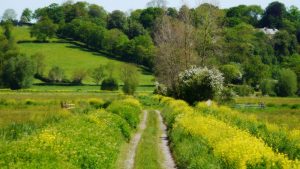
Drains and rhynes – Joy Russell
The agricultural revolution brought one of the most significant changes to the landscape of the marshes. Growing demand for food drove up land values and profits, making it economic to drain and improve large areas of the Avalon Marshes, including the peat moors. Acts of Parliament were passed and what was once open common land was enclosed. The regular pattern of droves, drains and rhynes were constructed and the soils were improved.
What to do / Where to go
Cycle our Heritage routes and you will see the enclosed landscape created during the agricultural revolution.
Transport Revolution – Turnpikes, Canals and Railways – 1830s to 1850s
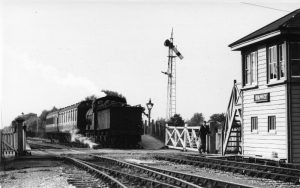
Somerset & Dorset railway at Shapwick – ‘WC Eyers Collection, via S&DRT
Turnpike roads linked the main centres of Bridgwater, Street, Glastonbury, Wells and Highbridge mainly using the higher ground. In 1827 the Wedmore Turnpike Trust was established and it built its road straight across the Avalon Marshes linking Wedmore, Westhay and Shapwick.
Water has always a means of transport in the marshes, from dugout canoes to turf boats (also used in floods!). The canal age saw the construction of the Glastonbury Canal linking Glastonbury to the sea at Highbridge. Opened in 1833 grand dreams faded quickly as the age of the railway arrived.
In 1854 the Somerset Central Railway was opened, built along the route of the canal. Soon this grand scheme faded to become a rural branch of the famous Somerset & Dorset Joint Railway. This grew its own short branches to Wells and Bridgwater. The “main” line lumbered on until 1966 when finally Dr Beeching wielded his axe.
What to do / Where to go
- Cycle from Glastonbury to the Avalon Marshes Centre through Ham Wall and Shapwick Heath National Nature Reserves; you will be on the former trackbed of the Somerset & Dorset Railway and towpath of the Glastonbury Canal. Refresh yourself at the Avalon Marshes Centre and take the old turnpike to Westhay tollhouse. Turn off here for Westhay National Nature Reserve.
- Join Sir John Betjeman on a journey along the Somerset & Dorset Railway in 1963 – “Lets Imagine a Branch Line“
Industrial Revolution – The Leather Trade – 19th century
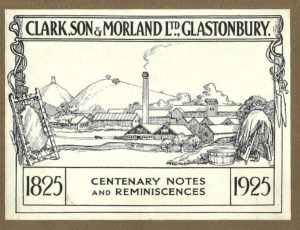
Leather Trade – Morlands
This period did not bring great change to the marshes themselves other than the growing demand for food and fuel. However, the town of Glastonbury and nearby town of Street had a growing leather industry. Clarks Shoes started in Street in 1825. Expansion came and in 1870 John Morland of the Clarks partnership bought a tannery at Northover in Glastonbury. The new company, Clark, Son & Morlands Limited, grew to be a large business employing many people and using skins from local farms. The new large factories stood near Glastonbury Station on the Somerset & Dorset railway allowing products to be sent all over the country and the world. The wealth created by growing trade in goods and food financed the fine houses and other buildings which can be seen in Glastonbury today.
What to do / Where to go
- Why not visit the Red Brick Building which lies at the heart of the old Morland’s site; or
- Explore the streets of Glastonbury – our Wearyall Hill, Beckery and the Brue walk starts at the Red Brick Building and will take you around part of Glastonbury.
War and Water – 1914-18 and 1939-45
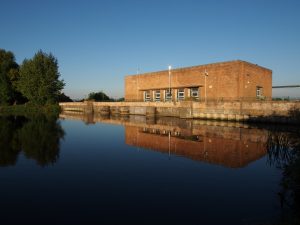
Gold Corner pumping station – AMLP staff
Both world wars brought a vast social change to the area as it did to the whole country. Men headed off to fight leaving women to take on many of their tasks. Agricultural areas such as the marshes were vital to sustain a nation whose supply lines were under attack. Factories such as the leather trade switched to war work; one of Morland’s products was the famous RAF flying jackets.
World War 2 saw the construction of the Huntspill River and Gold Corner pumping station. Built to supply water to the vital Puriton explosives factory, clever design meant that it largely solved the problem of winter flooding in the area. Our Huntspill River page will tell you more.
What to do / Where to go
- Explore the Huntspill River National Nature Reserve
- Visit the village of Shapwick one of a handful of “be thankful” villages in the country.
Industrial Peat – 1900s to 1994
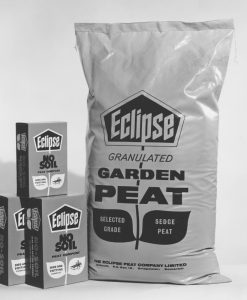
Peat products – Peter Alexander
Whilst peat has been dug in the Avalon Marshes for thousands of years the 20th century saw its extraction become a vast industry. It started on a relatively small scale but by the 1960s around 65,000 tons a year was being extracted, mainly for horticulture. This was to grow further. By the early 1990s, under the ownership of the national company, Fisons, output had reached 250,000 tons a year.
But a dramatic end came in 1994. A consumer boycott and other pressures forced Fisons to close down their peat digging operations all over the country. What they left behind were large holes and a far smaller industry run by long-standing local companies. You can read more about the history of peat on our Peat Industry page.
Archaeology – 1960s to 1994
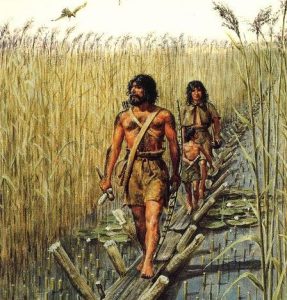
Sweet Track – E Mortalmans
One of the consequences of large scale peat extraction was that more and more fascinating archaeology was exposed and, unless care was taken, destroyed. In co-operation with local peat companies the archaeologists worked to record and save as much as possible. Early in 1970 a peat digger, Ray Sweet, found a trackway which was destined to make his name famous. 1973 saw the Somerset Levels Project being established which took the recording to a new level. Go to our Sweet Track page to learn more.
What to do / Where to go
Walk along the route of the Sweet Track and see a replica by visiting Shapwick Moor National Nature Reserve.
Wildlife and Tourism – 1950s into the future

Wonderful Wetland Wildlife – Nick Pound
During the 1950s The Nature Conservancy Committee for England produced a report highlighting the uniqueness of the flora and fauna of the peat moors, in particular the Shapwick Heath area. This report also highlighted the archaeological importance of the area. A reserve had first been proposed in 1947 and finally in 1961 an area of Shapwick Heath was designated as a National Nature Reserve (NNR). Somerset Wildlife Trust, established in 1964, also became active in the area buying small areas of special habitat – the start of the Catcott Complex and Westhay Moor NNR.
Over time more land was acquired and protection improved. The big change came in 1994 when vast areas of worked out peat excavations were handed over to the conservation bodies. Through hard work and investment these holes were converted into important habitats, waiting for their first guests. Word got around in the natural world; the reedbeds and lakes created are now home to otter, bittern, marsh harrier, great white egret – the full list is long and growing! Find out more about our Wonderful Wetland Wildlife.
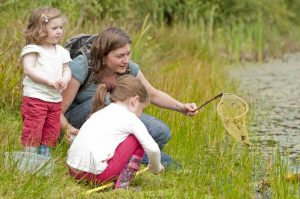
Pond dipping – Ross Hoddinott/2020VISION
With the creation of the nature reserves, greater interest in the natural world and recognition of the beauty of the marshes, more and more people are visiting the area. In 2012, in recognition of the its ever growing importance, the Heritage Lottery Fund invested in the area through the Avalon Marshes Landscape Partnership. Some £2.5 million was spent on a wide range of conservation, education and community projects.